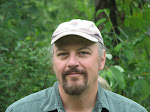He accurately notes that I make the point that Fenway's distinctive shape does not stem from the configuration of the surrounding streets. He then notes that the reason is because the dimensions of the Huntington Avenue Grounds were retained when Fenway was built.
The larger point is true, but not for the reasons cited. Fenway's distinctive shaped stems from the shape of the plot of land, - the park was built inward to use all the space and easily could have been symmetrical, or nearly so, had that been important. It was not, however, because the game, as it was played when Fenway was built, did not reach the borders of the property. Over time, the game grew out and the city grew in to surround the park, meaning that the shape of the field area (the basic footprint for which was accidentally created when new seats were built for the 1912 World Series) evolved over time.
Fenway was NOT built with the same dimensions as the Huntington Avenue Grounds. However, it WAS built to retain the same orientation in regard to the sun, which made Lansdowne St. the border in left field. Although no one at the time thought this confined left field in any meaningful way, the accidental result, over time, became Fenway's most distinctive feature - the Green Monster.
Thanks to Chad for a terrific and considerate review. Come see me tomorrow at 1:00 at the Back Bay Events center for the Boston Book Festival. See the review at the link below:
http://www.boston.com/sports/baseball/redsox/articles/2011/10/14/book_focuses_on_the_history_of_fenway_park_as_it_prepares_to_turn_100/


No comments:
Post a Comment